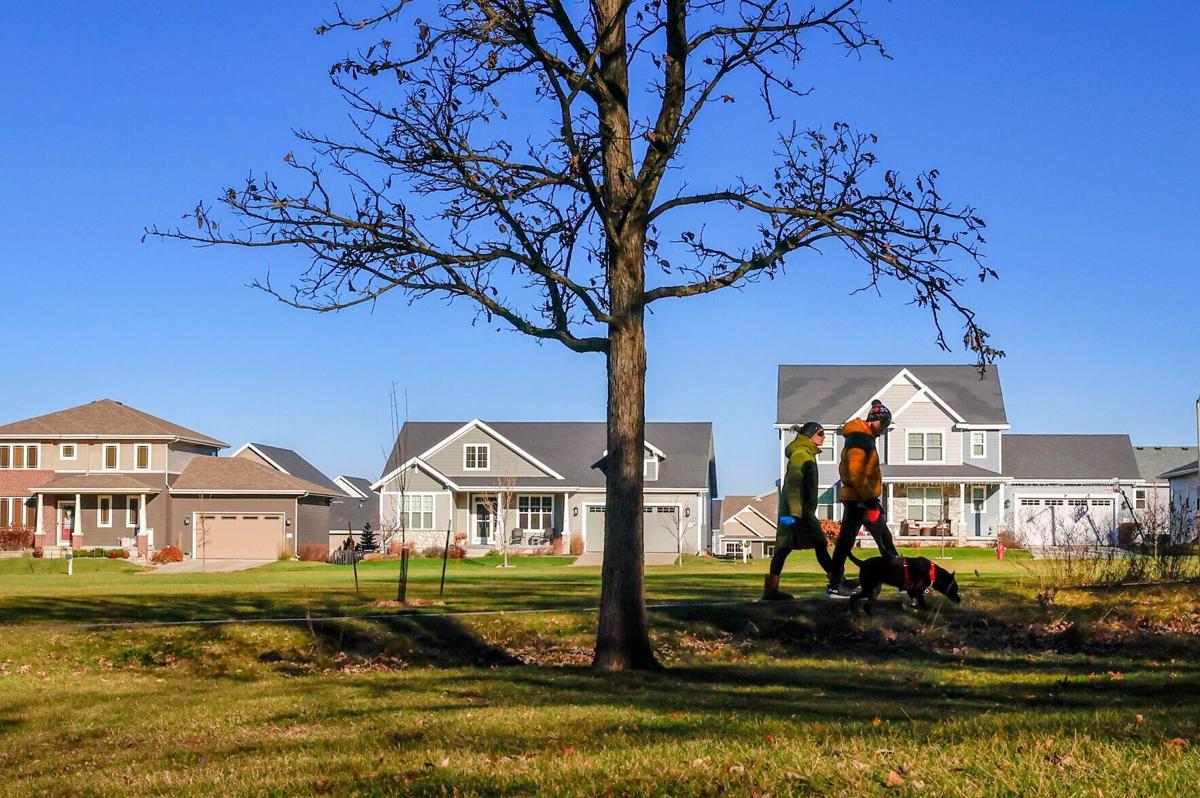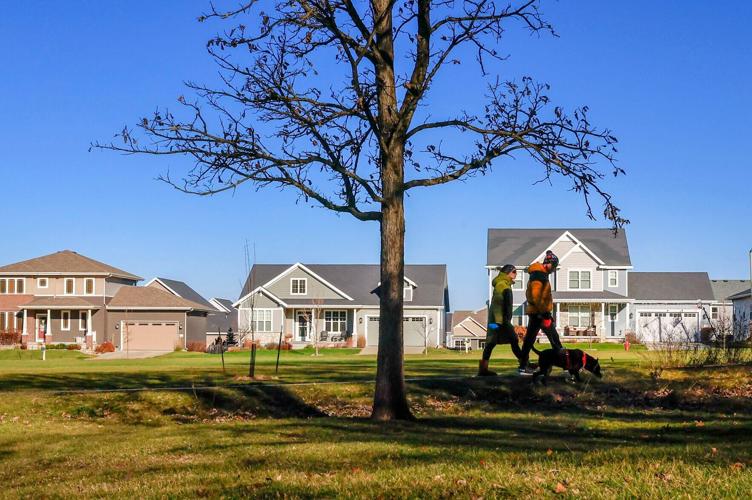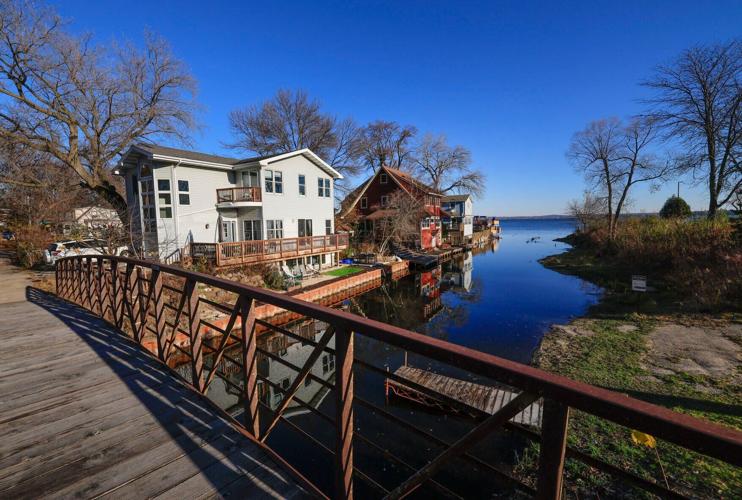Madison ranks alongside the biggest cities in the country for how easy it is for residents to access parks — and with 300 acres of new parkland acquired in the past decade, the city is trying to keep it that way.
The city on average adds a brand new park every year through its land buys, and other purchases go toward conservation, boosting parkland for a growing population and adding green space to the few pockets of the city that don’t have adequate access to parks.
Other top priorities include expanding parkland near the Ice Age Trail and public ownership of the shore of Lake Monona, Parks Superintendent Eric Knepp said.
“We’re always in the market to make logical investments,” Knepp said. “It takes a lot of things going right and it takes a pretty good plan.”
According to the Trust for Public Land, a parks and recreation advocacy nonprofit, Madison ranks 18th in the United States for the excellence of its parks across different metrics like access and equality.
People are also reading…
Madison’s peers in the group’s top 20 include major cities like New York, Chicago and Boston, as well as midsize cities like St. Petersburg, Florida, Cincinnati and Arlington, Virginia, which sits across the Potomac from Washington, D.C.
Driving Madison’s national preeminence is its widespread access to parks: 95% of the city’s residents live within a half mile of a park, a key standard for measuring access.
But to maintain that success and fix where it’s lacking, especially with a rapidly growing population, the park system needs persistent expansion.
For example, a standard metric for access — acres per 1,000 residents — is within industry standards for larger, community parks like Elver, Tenney and Warner parks. But that figure exceeds standards for smaller mini and neighborhood parks, according to a Parks and Open Space plan for 2018 to 2023.
An updated version of the plan to guide city parks planning over the coming five years is being drafted.
Since 2017, the city has added thousands of residents.
“It’s more pressure on athletic fields, more pressure on reservations for weddings, birthday parties, those kinds of things,” Knepp said. “We’ve been above the standard for a long time. We are slipping down to within the standard, but I don’t worry about that as long as we’re doing the next few things well.”
Housing growth
In Madison, new housing is taking the shape of high-rise apartments on the Isthmus to single-family developments from Veridian Homes on the rim of the city.
In both contexts, those residents need access to parks, either through new parks or expansions of existing ones.
To accommodate population growth, the city’s biggest parkland acquisitions in recent years have been on the Far West Side of the city.
That includes Thousand Oaks Park, a 12-acre park acquired in 2016 to serve Veridian’s 1000 Oaks neighborhoods. Another has been an 8-acre expansion of Midtown Commons Park, with another 10-acre expansion slated for the years ahead.
Coordination with Veridian for park development led to the biggest-ever city parkland buy on record. In the spring, the city spent $2 million to buy 40 acres along Mid Town Road from Veridian for a long-desired expansion of Elver Park.
The expansion complements a 600-unit housing development from Veridian that will remake a swath of farmland, bringing a mix of homes and apartments, new internal streets, commercial space and regional stormwater control.
Bringing a vision for the park into a reality is still a way off, with a revised master plan for Elver Park slated for 2027 to 2028, Knepp said. That timeline should allow for the initial residents of the new development to be involved in the park planning process.
“It’s got something for everybody today, and we think it’s going to have even more for everybody tomorrow,” Knepp said.
Intense focus on the Far West Side complements another key objective for parks officials: developing parkland along the Ice Age Trail.
In the past decade, nearly 122 acres, or 40%, of all the new parkland in the city has been by the trail.
Those acquisitions have included the creation of the Moraine Woods Conservation Park, a now 46-acre property on Woods Road that will eventually connect to the trail. Another is the 8-acre Bitzer Family Preserve, acquired in 2016.
“Where we can, we do our part, which for the city is going to be a very small part, to ensure the long-term, federally recognized, National Park Service-recognized Ice Age Trail can be built to where it was always planned to be,” Knepp said.
Beyond the Ice Age Trail, expanding public ownership of the Lake Monona waterfront is a priority for the Parks Division.

Homes along Lakeshore Court abut Wingra Creek and Olin Park in Madison. Buying these properties for an eventual expansion of Olin Park is a top priority for land acquisitions in the Parks Division.
Three of the lakeside homes along Lakeside Street and Lakeshore Court have been bought by the city, and the potential purchase of the other 11 in the next 10 to 15 years will allow for an expansion of Olin Park.
Those coveted properties will complement the city’s LakeWay project. The redevelopment of the Monona waterfront envisions a pedestrian zone and boardwalk along John Nolen Drive that connects Downtown to a redeveloped and hopefully expanded Olin Park.
What still needs access?
Even though Madison has exceptional access to parks, not every part of the city has the same access as others.
There are different ways to measure that, and depending on the kind of park, access varies.
Madisonians have adequate access to community parks in practically the entire city, with the exception of the Glendale neighborhood around La Follette High School, according to the city’s parks plan.

New residential construction progresses behind the site of a proposed development of Hartmeyer Park on the North Side of Madison. The city acquired nearly 15 acres for the park earlier this year, eliminating one of the few pockets of the city that had inadequate access to parkland.
For mini and neighborhood parks, which have small acreages and service areas, more neighborhoods are in need of access, meaning that residents are within a quarter mile of mini parks and a half mile of neighborhood parks.
Apart from Glendale, the Sherman neighborhood, long deficient in park space, will see more green space thanks to the purchase of the 15-acre Hartmeyer Park this year.
Other areas have more intractable access to parkland that has vexed officials.
One is the student-heavy area of the Regent Neighborhood north and northeast of West High School. Another is the Oak Park Terrace mobile home park on the North Side.
That area has the largest concentration of low-income families that are not in walking distance from a park.
















